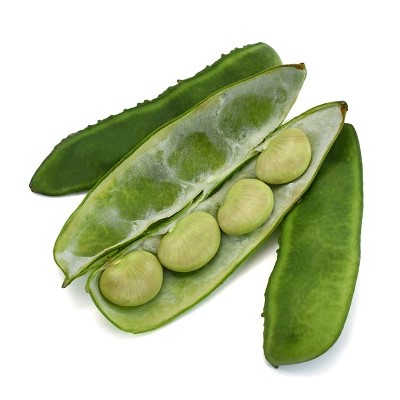 Lima beans are easy to grow in your own garden; they provide an excellent source of many different nutrients and can be used in a variety of recipes. They are a starchy vegetable that are sometimes known as butter beans because of their smooth, buttery texture.
Lima beans are easy to grow in your own garden; they provide an excellent source of many different nutrients and can be used in a variety of recipes. They are a starchy vegetable that are sometimes known as butter beans because of their smooth, buttery texture.
You can buy them dried or canned in the winter or use them when they ripen in your own garden in the late summer and autumn.
Lima beans grow looking like a regular green bean, although the pods are flatter than regular beans. You need to shuck the beans out of the pods, with each pod yielding 2-4 fresh lima beans.
Lima beans are usually green or cream-colored but there are other varieties of different colors, including red, purple, black, brown, and white.
Health Benefits of Lima Beans
Because lima beans are starchy, they contain more calories than other types of beans or peas—up to 200 or more calories per cooked cup of beans. Lima beans are great sources of fiber, which lowers cholesterol and helps your digestion.
The fiber soaks up sugar and cholesterol, so you don’t have a large surge of glucose in your bloodstream after eating them. The cholesterol in your diet is also absorbed by the lima bean fiber so that you can reduce your risk of getting a heart attack. Lima beans are healthier and provide a complete protein if you combine them with whole grains, such as whole grain rice.
Lima beans are one of the few vegetables that contain a good source of molybdenum, which is a part of a healthy enzyme called sulfite oxidase. Our bodies use sulfite oxidase to eradicate and detoxify our bodies from sulfites. Sulfites are used to preserve foods you buy at the supermarket, such as deli salads, salad bars, and other foods.
Some people are especially sensitive to sulfites and get a headache, disorientation or a rapid heartbeat after taking in food preserved with sulfites. Molybdenum from lima beans can help.
Dietary Fiber and Lima Beans
Lima beans are a type of legume, which means it is an excellent source of fiber. As mentioned, the fiber can help those with high cholesterol and diabetes because it has a low glycemic index and has soluble fiber, which is the type of fiber used in binding cholesterol.
The low glycemic index of lima beans means that it doesn’t allow for a rush of glucose in your system after eating them and you don’t overstress your pancreas, keeping blood sugar leveled out.
Fiber also binds with the bile acids in the duodenum. It is bile acids that go on in the metabolic process to make cholesterol, which puts you at risk for heart disease. The bile acids instead pass right through the digestive system without being absorbed and made into cholesterol.
Lima beans are also rich in insoluble fiber, meaning that it bulks up the stool and allows for regular bowel movements and less constipation. Insoluble fiber is healthier for people who have diverticulosis or who have irritable bowel syndrome.
Lima Beans and Risk of Heart Attacks
Lima beans are a type of legume and legumes have been extensively studied as sources of heart disease protection. One study looked at over 16,000 men across the world who were at risk of heart disease by virtue of being men and being middle-aged.
They found that those men who ate more legumes had a decreased risk of heart disease over the 25-year study period. Another study looked at men eating high fiber foods, including lima beans in the US. These were adults followed for more than 19 years.
Those who ate 21 grams of fiber per day had a 12 percent lesser chance of coming down with heart disease when compared to people who ate less than 5 grams of fiber per day. Water-soluble fiber was determined to have the best protection against heart disease. Legumes alone decreased the risk of dying from heart disease by 82 percent.
Magnesium and Folate
Lima beans contain high amounts of magnesium and folate per serving. The folate is a vitamin that lowers the quantity of homocysteine in the bloodstream, which is a risk factor for all forms of heart disease, including stroke, heart attack, and peripheral vascular disease.
The magnesium in lima beans acts as calcium channel blockers, which lowers blood pressure and improves the flow of nutrients and oxygen within the bloodstream. A lack of magnesium in the diet can lead to heart attacks and the liberation of oxygen free radicals in the body, which are dangerous to all cells of the body.
The Best Way to Eat Lima Beans
Lima beans have the maximum amount of nutrients, including iron and manganese, if you pick them fresh from your garden and cook them right away.
You can eat them alone, salted, or incorporate them into soups and casseroles.
Cooled, cooked lima beans are an excellent addition to green salads. Lima beans are at their healthiest when you soak the dried beans in water and cook them without salt, adding the salt after cooking.






